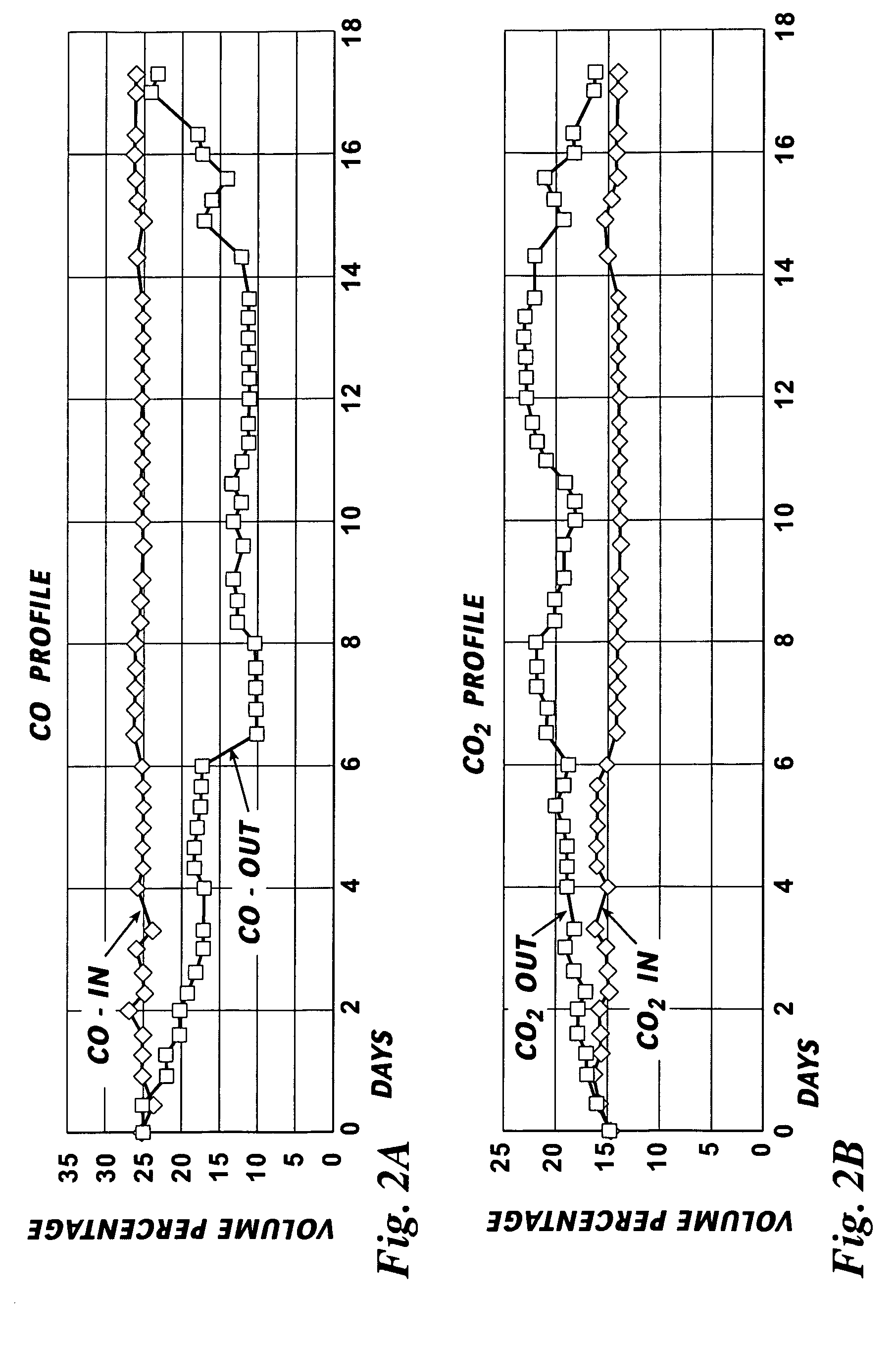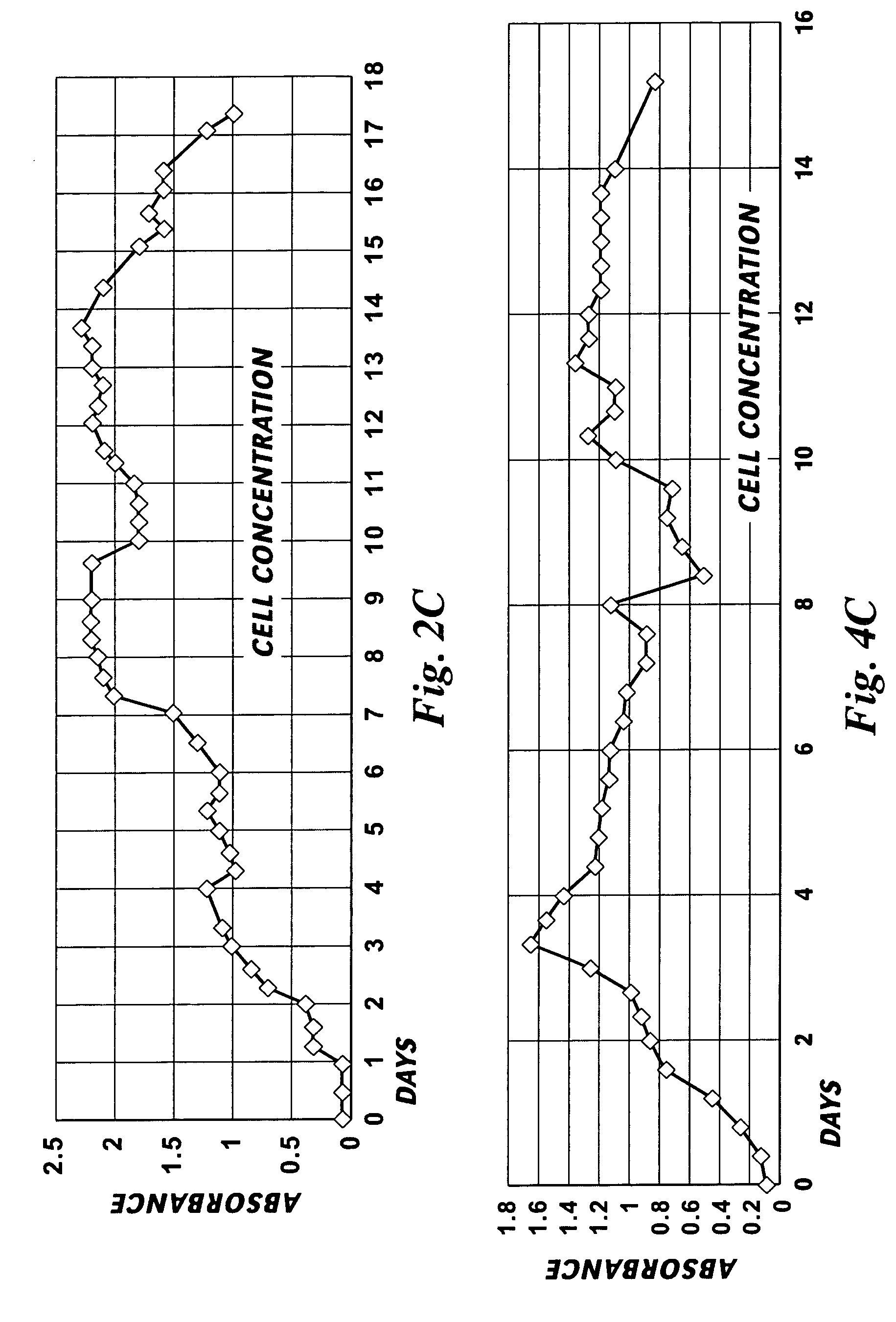Indirect or direct fermentation of biomass to fuel alcohol
- Summary
- Abstract
- Description
- Claims
- Application Information
AI Technical Summary
Benefits of technology
Problems solved by technology
Method used
Image
Examples
example 1
Identification and Initial Characterization of P7
Isolation of P7
[0058]According to the present invention, the microbial catalyst used to convert syngas to liquid products (such as ethanol, butanol and acetate) is a novel acetogen, P7, which was isolated from an agricultural settling lagoon located in Oklahoma. P7 was isolated by methods that are known by those of skill in the art. Briefly, inocula were used to set up enrichments in a mineral medium (Tanner, 1997, in Manual of Environmental Microbiology, Hurst et al., eds. ASM Press, Washington D.C.) supplemented with yeast extract and incubated at both 37° C. and 50° C. in the presence and absence of BESA (an inhibitor of methogens but not acetogens) and under a CO:CO2:N2 (60:30:10) atmosphere. Enrichments were monitored for gas consumption, ethanol production and acetic acid production. Ethanol producing enrichments were further incubated at 37° C. Enrichments showed a decrease in culture pH from an initial pH of 6.0 to a final pH ...
example 2
References for Example 2
[0079]Klasson, K. T., I. L. Gaddy. (1992), Bioconversion of Synthesis Gas into Liquid Fuels. Enz. Micro. Tech., 14, 602-608.[0080]Vega, J. L., E. C. Clausen, J. L. Gaddy. (1990). Design of Bioreactors for Coal Synthesis Gas Fermentations. Resources, Conservation and Recycling, 3, 149-160.[0081]Phillips, J. R., E. C. Clausen, J. L. Gaddy (1994). Synthesis Gas as a Substrate for Biological Production of Fuels and Chemicals, App. Biochem. Biotech., 45 / 46, 145-156,[0082]Barfield, B J., K. A. Kranzler, (1997). Economics of Biomass Conversion to Ethanol using Gasification with a Microbial Reactor. Report: Biosystems and Agricultural Eng., Oklahoma State University, Stillwater, Okla.[0083]Taliaferro, C. M., F. P. Hoveland, B. B. Tucker, R. Totusek, R. D. Morrison, (1975).[0084]Performance of Three Warm-Season Perennial Grasses and a Native Range Mixture as Influenced by N and P Fertilization. Agronomy, 67, 289-292,[0085]Huhnke, R. L., W. Bowers. (1994). AGMACHS-Agri...
example 3
Further Optimization of Ethanol Production by P7
[0086]Optimization experiments showed the following:
[0087]1. The production of ethanol by P7 was enhanced two fold by increasing the level of iron in the standard medium. When the final concentration of iron was increased to 200 μM compared to the standard concentration of 20 μM, ethanol production increased from 20 mM to 40 mM under CO-limited conditions. When no iron was added to the standard medium, ethanol production was inhibited, similar to the effect of elimination of iron on the production of solvents in Clostridium acetobutylicum (McNeil and Kristiansen, 1985. The effect of medium composition on the acetone-butanol fermentation in continuous culture. Biotechnol. Bioeng. 29:383-387).
[0088]2. Controlling the culture pH at 5 (compared to the pH optimum for growth, 6), ethanol production was increased five fold. pH was adjusted using sterile anaerobic 1 N NaOH or HCl after monitoring pH using narrow range pH indicator strips (cato...
PUM
 Login to View More
Login to View More Abstract
Description
Claims
Application Information
 Login to View More
Login to View More - R&D
- Intellectual Property
- Life Sciences
- Materials
- Tech Scout
- Unparalleled Data Quality
- Higher Quality Content
- 60% Fewer Hallucinations
Browse by: Latest US Patents, China's latest patents, Technical Efficacy Thesaurus, Application Domain, Technology Topic, Popular Technical Reports.
© 2025 PatSnap. All rights reserved.Legal|Privacy policy|Modern Slavery Act Transparency Statement|Sitemap|About US| Contact US: help@patsnap.com



